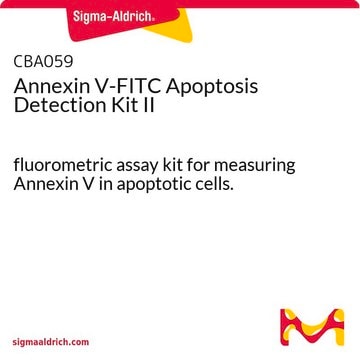General description
We are committed to bringing you greener alternative products, which adhere to one or more of The 12 Principles of Green Chemistry.This antibody is Preservative-free, produced without the harm or sacrifice of animals and exceptionally stable to allow for ambient shipping and storage if needed and thus aligns with "Waste Prevention", "Designing Safer Chemicals" and "Design for Energy Efficiency".
Click here for more information.
ZooMAb® antibodies represent an entirely new generation of recombinant monoclonal antibodies.Each ZooMAb® antibody is manufactured using our proprietary recombinant expression system, purified to homogeneity, and precisely dispensed to produce robust and highly reproducible lot-to-lot consistency. Only top-performing clones are released for use by researchers. Each antibody is validated for high specificity and affinity across multiple applications, including its most commonly used application. ZooMAb® antibodies are reliably available and ready to ship when you need them.
Specificity
Clone 133-1H is a ZooMAb® Mouse recombinant monoclonal antibody that specifically detects Fusion glycoprotein F0 in Human respiratory syncytial virus.
Immunogen
Human respiratory syncytial virus A (strain A2).
Application
Quality Control Testing
Evaluated by Immunocytochemistry in RSV infected HEp-2 cells..
Immunocytochemistry Analysis: A 1:100 dilution of this antibody detected RSV in HEp-2 cells infected with Human respiratory syncytial virus (RSV).
Tested applications
Enzyme Immunoassay Analysis (ELISA): Serial dilutions of this antibody detected RSV purified from VERO cells infected with Human respiratory syncytial virus.
Affinity Binding Assay: A representative lot of this antibody bound RSV with a KD of 1.2 x 10-6 in an affinity binding assay.
Note: Actual optimal working dilutions must be determined by end user as specimens, and experimental conditions may vary with the end user
Evaluated by Immunocytochemistry in RSV infected HEp-2 cells.
Immunocytochemistry Analysis: A 1:100 dilution of this antibody detected RSV in HEp-2 cells infected with Human respiratory syncytial virus (RSV).
Target description
Fusion glycoprotein F0 (UniProt: P03420) is encoded by the F gene (Gene ID: 1494475) in Human respiratory syncytial virus A (strain A2). Human respiratory syncytial virus (hRSV) is a pneumovirus that causes significant respiratory disease in premature and full-term infants. Fusion glycoprotein F0 of RSV is synthesized with a signal peptide (aa 1-15), which is subsequently cleaved off. The inactive F0 precursor is then cleaved at two sites (aa 109-110 and 136-137) by furin-like protease to give rise to produce mature F1 and F2 fusion glycoproteins. Fusion glycoprotein F1 is a single-pass type I membrane protein that can exist as homotrimer or can form disulfide-linked heterodimer with fusion glycoprotein F2. Its N-terminus has a hydrophobic fusion peptide that inserts into the target host membrane. It is buried in the center of the trimer cavity before cleavage by host furin. The fusion glycoprotein F2 is the major determinant of the species specificity of RSV infection. Fusion protein can exist in at least 3 conformational states: pre-fusion native state, pre-hairpin intermediate state, and post-fusion hairpin state. During viral and plasma cell membrane fusion, the coiled coil regions assume a trimer-of-hairpins structure, positioning the fusion peptide in close proximity to the C-terminal region of the ectodomain. This fusion is pH independent and occurs at the plasma or endosomal membrane. The fusion protein is reported to be involved in the entry into the host cell through the interaction with host IGF-R1. This interaction activates protein kinase z that recruits host NCL/nucleolin to the apical cell surface where it can bind fusion glycoprotein F1. Later in infection, fusion protein expressed at the plasma membrane of infected cells can mediate fusion with adjacent cells to form syncytia, a cytopathic effect that could lead to tissue necrosis. Fusion protein can also trigger p53-dependent apoptosis in cells. This ZooMAbZooMAb® recombinant monoclonal antibody, generated by our propriety technology, offers significantly enhanced specificity, affinity, reproducibility, and stability over conventional monoclonals. (Ref.: McLellan, JS., et al. (2013). Science. 340(6136); 1113-1117; Olivier, A., et al. (2009). Int. J. Exp. Pathol. 90(4); 431-438; Schlender, J., et al. (2003). J. Virol. 77(8); 4609-4616).
Physical form
Purified recombinant mouse monoclonal antibody IgG, lyophilized in PBS with 5% Trehalose, normal appearance a coarse or translucent resin. The PBS/trehalose components in the ZooMAb formulation can have the appearance of a semi-solid (bead like gel) after lyophilization. This is a normal phenomenon. Please follow the recommended reconstitution procedure in the data sheet to dissolve the semi-solid, bead-like, gel-appearing material. The resulting antibody solution is completely stable and functional as proven by full functional testing. Contains no biocide or preservatives, such as azide, or any animal by-products. Larger pack sizes provided as multiples of 25 μL.
Reconstitution
300 μg/mL after reconstitution at 25 μL per vial. Please refer to guidance on suggested starting dilutions and/or titers per application and sample type.
Storage and Stability
Recommend storage of lyophilized product at 2-8°C; Before reconstitution, micro-centrifuge vials briefly to spin down material to bottom of the vial; Reconstitute each vial by adding 25 μL of filtered lab grade water or PBS; Reconstituted antibodies can be stored at 2-8°C, or -20°C for long term storage. Avoid repeated freeze-thaws.
Legal Information
ZooMAb is a registered trademark of Merck KGaA, Darmstadt, Germany
Disclaimer
Unless otherwise stated in our catalog or other company documentation accompanying the product(s), our products are intended for research use only and are not to be used for any other purpose, which includes but is not limited to, unauthorized commercial uses, in vitro diagnostic uses, ex vivo or in vivo therapeutic uses or any type of consumption or application to humans or animals.







